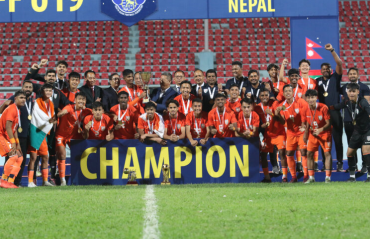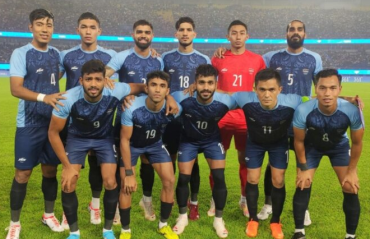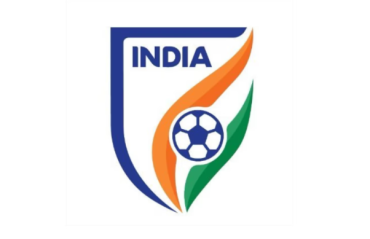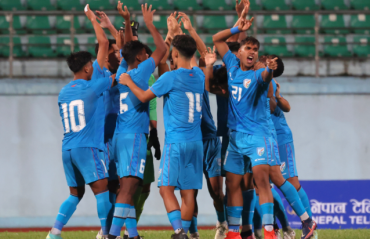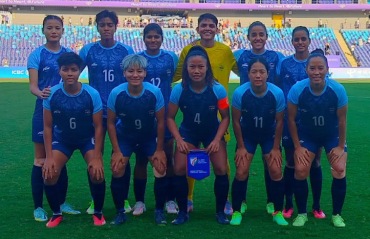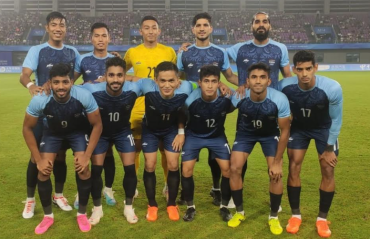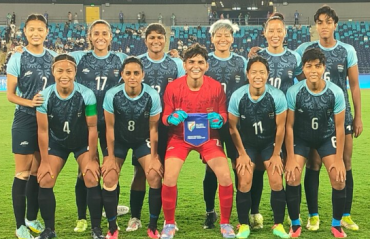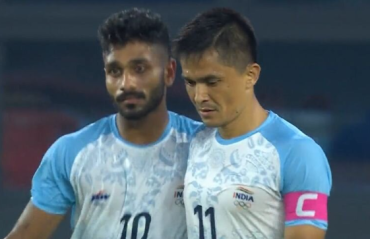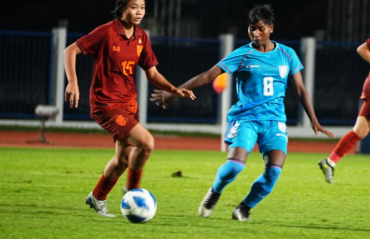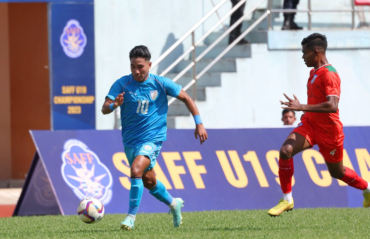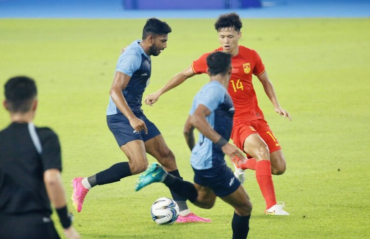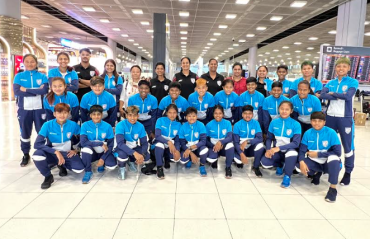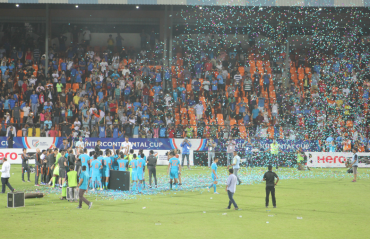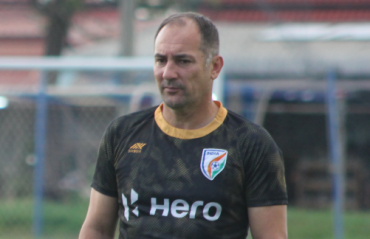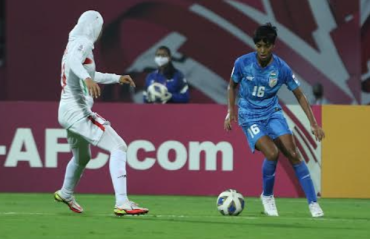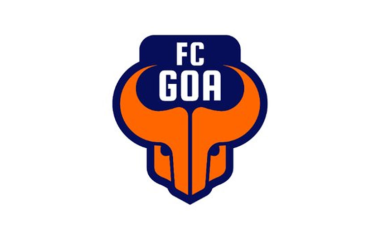Why ISL must kill the I-League
- By Chiranjit Ojha

- July 01, 2015
HEADLINES CAN BE a touch over-dramatic, and they don't always convey the full meaning. They are quite effective for raking in the clicks, though. So it is with that coy sense of irony that I offer you this headline, and an argument that needs at least a few paragraphs to play out.
Indian football has arrived at a critical juncture, as you might have noticed. In 2010, IMG-Reliance signed a major partnership deal with AIFF with the promise of bringing in a new era in the sport, and boy have they made good on that promise.
Part of their deal was starting a new, IPL-style tournament that eventually materialised as the Indian Super League. A new tournament with city-based franchises, seeped in Bollywood-branded glamour; ISL basically was a gala event that copied IPL down to the T. And it worked. People started pouring into the stadiums and the sport of football captured the nation's prime-time consciousness. The football part of the equation paid off as well; in the presence of some formerly world class players, inaugural ISL saw a fierce race to the top and a photo-finish grand finale. It was everything Indian football fans had always wanted to see.
But there were concerns. ISL being an exclusive tournament, the top-tier football clubs in this country were not allowed to participate. Yes, they could partner with a franchise or buy stakes in one, but their identity was to find no place in ISL's shiny roster. IMG-Reliance were marketing it as the “birth of Indian football” and there were to be no old names here. As the newfound brand drew spectators and TV ratings unmatched by any domestic football event in India, fans of the old clubs were taken by an anxiety; was this “birth” to be a death to the clubs that kept football afloat in this country during its worst days?
Parts of their fears were to come true. First to feel the brunt of ISL were the Goa clubs. The same Fatorda that was filled to the brink for FC Goa's home matches were starkly empty for its I-League clubs. Dempo, Salgaocar and Sporting Clube de Goa clearly saw their worst season ever in terms of crowd attendance. These clubs didn't have much money to spend on marketing; Dempo and Salgaocar, both stakeholders in FC Goa, didn't even try. At present both these are locked in a relegation battle in the I-League while Sporting Clube de Goa barely survived it. It is rumoured that whichever club gets relegated will fold for good.
Then there was the Federation Cup. The nation's premier cup competition was reduced to a joke as AIFF squeezed it in between ISL and I-League, forcing teams to play five matches in nine days. Organization was in shambles; the first few matches did not get televised because apparently they forgot to pick up the uplink clearance from the local government. But in its infinite wisdom, AIFF chose to shut it down; with ISL, I-League and World Cup Qualifiers vying for space in the 2015-16 Indian football calendar, trying to fit another tournament was an exercise in futility. Meanwhile, the I-League magically shrank to 11 clubs and had only 5 months to play out.
So, the signs are all here, is the worst really about to happen? Is ISL going to kill I-League too?
Unfortunately, no.
Here, the 'no' is easier to explain than the 'unfortunately' part, so let's begin with that.
ISL won't kill I-League because I-League feeds ISL. It's the clubs that groom players in their academies, maintain multiple junior teams and take care of players year round, so that ISL can cherry-pick from the lot, use them for 2-3 months and return them. I-League is the backbone of Indian football, not ISL.
Also, I-League is growing in popularity. Apart from the century-old, ever popular Kolkata clubs we now have new fan cultures developing in Bengaluru, Mumbai etc. Shillong, too, has a long history of football fandom and matches played there draw good crowds as well. And Aizawl will join the ranks next season; the Mizoram capital is known for its love for football and Aizawl FC's promotion to the top division will see a I-League spread out to a new, potential housefull venue.
There's also the fact that as a nation's football governing body, AIFF is required to maintain a domestic league. Now ISL, for all its glamour, is not a real league, and none of its franchises meet the criteria to be recognised as full-fledged football clubs. Hence, I-League is going nowhere. ISL cannot and will not kill it. Indian national team coach Stephen Constantine, in a recent interview, also said the same.
Now, to the “unfortunately” part. I said that because maintaining two separate tournaments hurts the system, and it's unsustainable. With ISL and I-League fighting over space in the calendar, you end up with players being burned out and the national team being ignored. On top of that, any new factor would collapse the balance. Even a prestigious duty like hosting the U-17 World Cup led to resentments because it ate into ISL's exclusive window, and I-League will bear the consequences because it will have an even smaller window for itself in the 2017-18 season. An unstable calendar like this kills any room for growth. And that is why this situation must end.
In the end, there can be only one league. And since the ISL has been a runaway success, we cannot dispose of it. So, the only solution is to merge I-League and ISL, while retaining the ISL brand name. This will give us a strong league of 16-17 teams at the top tier, and bring some coherence to this schizophrenic mess of a football calendar we presently have.
After all, a 16 club I-League is exactly what Constantine has wished for. Except he wants them to be divided into two conferences, like USA'a Major League Soccer. That part is a bad idea. Much of the league's charm lies in clubs from Bengal playing clubs from Goa, or North-East clubs playing a club from Maharashtra etc. Dividing the league would diminish the chances of some exciting match-ups happening, and reduce the importance of the initial stages. This will be nothing short of a death-knell for the I-League.
Make no mistake; the same principle, when applied at the Under 15 and Under 17 level, makes a lot of sense. That's because the main objectives behind that application is to save time and travel costs. But if one prioritises saving plane fares while organising the nation's top tier football league I think it completely defeats the purpose.
AIFF had tried to implement this earlier, but a unanimous protest from the clubs led to it being revoked. Because everyone knows that no matter what the official reason is, the only reason they want to divide the I-League is to make more room for the ISL. Ideas like this that threaten the very integrity of the I-League are actually bigger threats to its existence than any private league trying to poach its fans. It will hurt the league while doing nothing to solve the calendar imbalance, or help the sport grow in any way.
So, to sum up, I guess I'm not really saying ISL should kill I-League at all. What I want ISL is to step into I-League's shoes, absorb its diverse, democratic qualities, and assume the role of the official national league of India. I want the ISL franchises to step up to the plate and assume responsibility for training and caring for their players all season. I want India to finally have a league that is stable and secure in its place, and sends strong teams to represent the country in the Asian Leagues.
I know the headline implies otherwise. Sorry.









